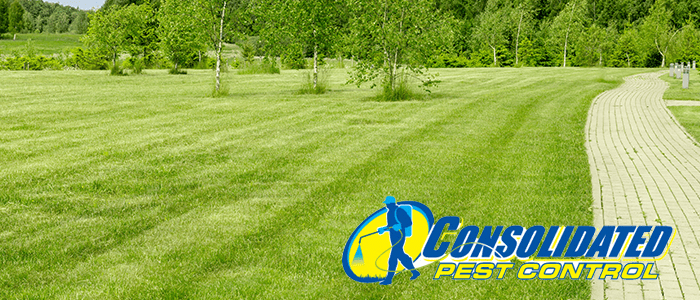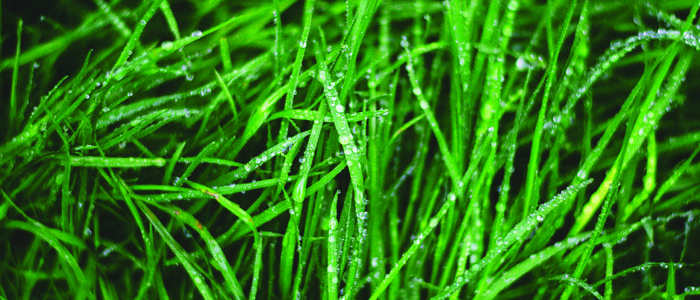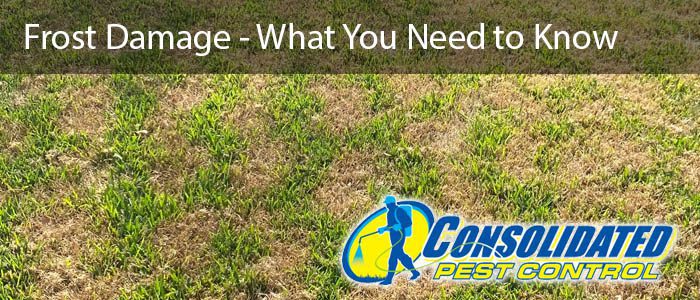
Our area is well-known for its warm, subtropical climate—yet occasional cold snaps and frosts can still take homeowners by surprise. Even a short overnight dip into cooler temperatures can harm lawns that are accustomed to balmy conditions. If you’ve noticed brown or discolored patches appearing on your turf, frost damage may be the culprit. In this article, we’ll explore how frost impacts grass in Central Florida, how to recognize the signs, and what you can do to protect and rejuvenate your lawn.
1. Why Frost Occurs in Central Florida
While Central Florida rarely experiences extended cold periods, the region can encounter short-lived cold fronts in late fall and winter. During these cold snaps, temperatures can briefly drop to near or below freezing, leading to frost formation. Frost typically happens during clear, calm nights when the moisture in the air condenses and freezes on surfaces like grass blades.
Key Takeaway
- Short-lived but impactful: Even a single night of frost can cause visible damage to sensitive turfgrass varieties.
2. Common Turf Varieties & Their Vulnerabilities
Different grass species have varying degrees of cold tolerance. In Central Florida, popular types of turf include:
- St. Augustine Grass: Known for its broad blades and thick growth, it tolerates mild cold reasonably well but can still show damage after a frost.
- Bermuda Grass: Often used for sports fields, it goes dormant in cooler weather and can turn brown if frost-burned.
- Zoysia Grass: Generally more resilient to temperature fluctuations than some other warm-season grasses, but still susceptible to frost damage.
- Centipede Grass: Prefers warm environments; low temperatures can easily stress or discolor it.
Key Takeaway
- Grass-specific responses: Understanding your lawn’s grass type is crucial in predicting and managing frost damage.
3. Identifying Frost Damage
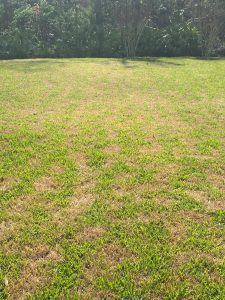 Signs of frost damage can appear soon after a chilly night, but the full extent often becomes visible over several days or weeks. Look for:
Signs of frost damage can appear soon after a chilly night, but the full extent often becomes visible over several days or weeks. Look for:
- Discoloration: A frosted lawn may develop patches of brown or tan grass.
- Brittle Blades: Grass may feel crispy underfoot due to frozen cell damage.
- Delayed Green-Up: Once spring arrives, areas affected by frost may take longer to return to their vibrant, healthy color.
Key Takeaway
- Spot the symptoms early: Quick diagnosis helps you prevent further damage and begin recovery measures.
4. How Frost Damages Turf
When frost forms on the grass, the moisture within grass blades can freeze, causing ice crystals to rupture the cells. This damage leads to browning, wilting, or thinning of the grass. Though not always lethal, it weakens the turf and can make it more vulnerable to pests, diseases, and weed encroachment—issues often best managed with professional help from services like Consolidated Pest Control.
Key Takeaway
- Cellular damage: Freezing causes physical harm to grass blades, weakening your lawn.
5. Preventing Frost Damage
While you can’t control the weather, there are a few steps you can take to reduce the impact of frost on your lawn:
-
Mow Correctly
- Keep the grass slightly taller in winter to provide insulation for the roots.
- Avoid mowing right before a forecasted frost; shorter grass is more susceptible to damage.
-
Proper Irrigation
- Water during early morning or midday—never in the evening when temperatures may drop.
- Overwatering can leave surfaces moist, increasing the likelihood of frost forming on blades.
-
Fertilize Wisely
- Using a balanced fertilizer in the cooler months strengthens grass roots.
- Avoid heavy nitrogen fertilizers too late in the season, which can encourage tender new growth that’s easily damaged by cold.
-
Light Covering
- In some cases, covering small or especially delicate lawn areas with breathable fabric overnight can help hold in warmth.
Key Takeaway
- Minimize exposure: Adjusting mowing height, watering schedules, and fertilization can help turf withstand the rare frosts in Central Florida.
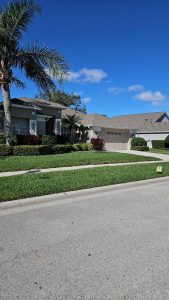 6. Recovery & Maintenance After Frost
6. Recovery & Maintenance After Frost
If you’ve already experienced frost damage, there are strategies to help your lawn bounce back:
-
Avoid Heavy Traffic
- Walking on frost-damaged grass can crush the brittle blades and slow recovery.
-
Reseed or Patch
- For severely damaged areas, overseeding or patching with appropriate grass seed can help fill in thin spots.
-
Adjust Lawn Care Schedule
- Resume regular mowing and fertilizing once temperatures consistently warm.
- A springtime feeding with a balanced, slow-release fertilizer encourages robust regrowth.
-
Consult Professionals
- Consolidated Pest Control offers services to protect your lawn from pests and disease, helping to ensure faster recovery post-frost.
Key Takeaway
- Nurture stressed lawns: Give damaged grass time and proper care to regain its healthy color and thickness.
7. Partner with Consolidated Pest Control
While frost damage primarily affects the physical structure of your lawn, a weakened turf is an open invitation for pests, weeds, and diseases to take hold. Proactive management can save homeowners from costly lawn renovations down the road. Consolidated Pest Control specializes in lawn care and pest management, ensuring that your turf remains resilient year-round.
- Expert Assessment: Get a professional evaluation of your lawn’s health and vulnerability.
- Customized Treatment Plans: Benefit from targeted fertilization, weed control, and pest prevention strategies designed for Central Florida’s unique environment.
- Long-Term Care: Ongoing maintenance keeps your lawn at its best, reducing the risk of seasonal damage.
Key Takeaway
- Preventative care is paramount: Early intervention and professional guidance help avoid extensive damage to your lawn.
Final Thoughts
Though frost is a relatively rare occurrence in Central Florida, it can leave a noticeable mark on your lawn. By knowing how to identify and manage frost damage, you’ll be better prepared to keep your turf healthy even during unexpected cold spells. From proper mowing and watering techniques to seeking professional guidance from Consolidated Pest Control, a little preventive effort goes a long way toward maintaining a lush, green lawn year-round.
Ready to Protect Your Lawn?
If you’re concerned about the effects of frost on your turf or need assistance with pest control and lawn maintenance, reach out to Consolidated Pest Control. Their team of local experts will help you develop a proactive plan tailored to Central Florida’s climate—so your lawn stays healthy and beautiful, no matter the forecast.

